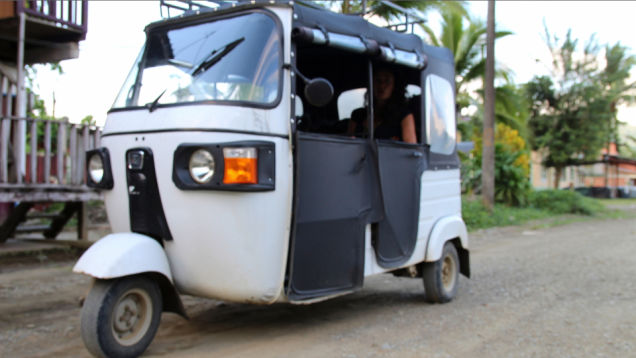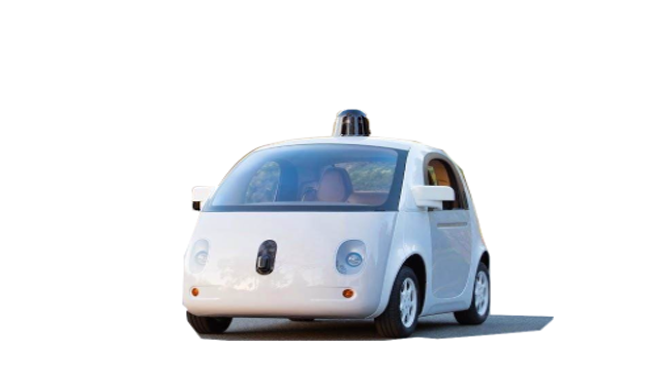Talkin' bout a revolution
After more than 100 years of incremental change, urban transportation is on the verge of a revolution. Last week, NYU’s Alain Bertaud brought together a small group with backgrounds that included transportation engineering, urban planning, economics, and applied physics, and who worked in the private sector, universities, think tanks, or government agencies in US, China, South Korea, and India to compare notes on what they are seeing. It soon became clear that our familiar words were getting in the way. We need a new vocabulary to talk about new possibilities.
1. “Point” and “station” as destinations
Without making any assumptions about the technology that delivers them, it was useful to talk about 3 types of trip: “point-to-point”, “station-to-station”, and “point-to-station.” (Adding “station-to-point” seems like overkill.) These might end up being shortened to P2P, S2S, and P2S, with P2* = {P2P, P2S}.
There a nice fractal pattern to P2* and S2S trips. At a national scale, trains and planes serve stations spaced every 10^2 to 10^3 km. At city scale, buses, subways, or trolley cars serve stations spaced every 100 m to 1 km. At the building scale, elevators and escalators serve floors separated by a few meters. P2* trips on different scales have been provided by feet, bicycles, and cars; there will soon be many other options.
As alternative terms, “trunk” versus “feeder” trips is too narrow; it excludes P2P trips. Mass transit, and public transit were used several times to indicate “a way to provide S2S trips” but these phrases clearly build in lots of unnecessary presumptions.
If the notion of P2* trips takes hold, one of the challenges Will be how to refer to the vehicles that will provide them because this is the area that is changing most rapidly.
Alain Bertaud took the usual argument for the car to a higher level of abstraction:
i) cities always have a gradient of densities; ii) lower density areas will always generate lots of long P2P trips; and iii) S2S trips require P2S trips. iv) So any functional urban transportation system will have to provide lots of P2* trips.
But this does not require any assumptions about who/what is driving the vehicle, who owns it, how many wheels it has, what its power source is; or whether it looks like this:

or this:

or this:

It is not clear what we will call this category of things, but piling up adjectives on top of “car” (three wheeled, not self-driving, gyrostabilized car, ..) is probably not the way to go.
2. “Sharing” is overloaded
The word “sharing” is now used to mean two very different things. Several people can share (= travel together in) a minibus. Or several different people can share (= take turns using) a rental car. The first use is the traditional one. The second has spun up from the hype around “the sharing economy.” No consensus emerged around two simple words that we could use in place of share that convey these two different meanings. (Serial monogamy versus polygamy was good for a laugh.)
Think about the potential for confusion in a discussion about sharing in the context of S2S trips where one person is thinking of a subway and the other is picturing a convoy of self-driving single person vehicles. Avoiding “share” does seem like a necessary concession to clarity. A good verb has died.
3. “Congestion” needs some adjectives
Congestion is used to refer to many things, but it is probably too important and too durable to abandon. But if so, we need to find a way to distinguish these meanings, particularly when we want to specify an operational measure of congestion.
A speaker from Beijing (who had access to amazing data) showed how some subway lines hit capacity constraints in peak hours. To some this was an example of congestion. To me as an economist, a capacity constraint seems different from the type of inefficient congestion that results from the free access that cars have to roads, which in the extreme can lead to gridlock.
It might take subway riders longer to get home during peak hours because they have to queue up for several trains before they can get on. It is economically inefficient to make subway trips more expensive at peak times by making people queue up and waste time instead of asking them to pay more; but this is not the same kind of reduction in the output of a road system that we see when car density increases.
One could apply some of the standard measures of traffic congestion based on lengthened travel time to these subway trips and find that the subway suffers from congestion. This might or might not be what we want the word congestion to mean.
One way to add some precision and provide some guidance about measurement might be to modify congestion in the same way that physicists modified energy when they distinguished between potential energy and kinetic energy, or even specialized forms such as heat.
This is going to be fun.